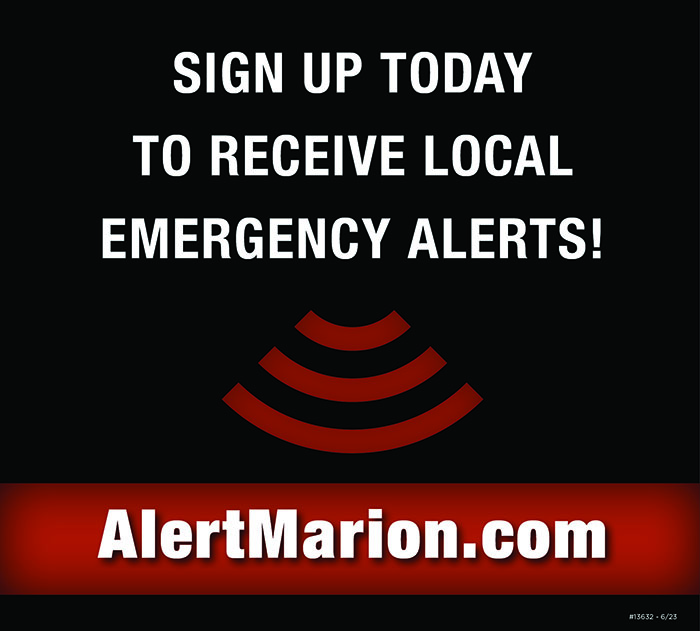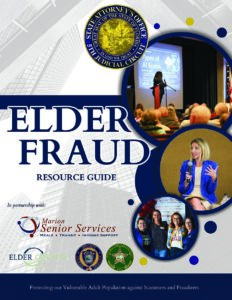About this time every year, we turn our attention to what might be heading our way over the next several months – storms and hurricanes. According to the National Oceanic and Atmospheric Administration (NOAA), the designated hurricane season starts June 1 and officially ends Nov. 30. Our community has dodged the hurricane bullet for the last couple of years, but that’s history. This is a new year and a new season.
So, let’s get off the couch and get prepared.

On top of the “must do” list is signing up for Marion County emergency alerts at alertmarion.com. There, you can customize your alerts to include hurricanes, heavy rain, flooding, strong winds, and even tornadoes. You can also choose how you prefer to be contacted – via text, phone call, email, or a combination of all three. Signing up to be alerted for any potential crisis is crucial – don’t skip it.
For individuals with special needs, Marion County offers a special needs program for residents with specific health and medical conditions, as well as those requiring transportation assistance. The program helps with sheltering, evacuation, and transportation. During a time of potential crisis, all resources within Marion County are available for this program – and they are significant. Register for special needs at alertmarion.com.
Every hurricane preparedness website tells us we should have a plan – a typed-out plan of what to do, where to go, where things are, and who to contact.
An emergency kit is a vital part of any plan. Included should be a week’s supply of required medications, as well as any over-the-counter meds. There should be a statement of your basic health, for example, any allergies, special health concerns, blood type, and, of course, a list of all prescribed medications. It is also a good idea to make copies of your credit cards and driver’s licenses. All of this should be stored in a waterproof envelope and, if possible, kept on your person at all times.
As news of a potential hurricane is broadcast, don’t waste time in getting to a gas station or charging station and filling up. From there, head to your nearest ATM and fill your pockets with cash. Should power be knocked out, credit cards may not be able to process. Cash will be king – and so will you!
Now that there’s cash in your pocket and gas in the car, head home and take care of the little things. Bring in all outdoor furniture, fill the tub with water (for washing and flushing), and check to see if you have enough propane, charcoal, or lighter fluid. Also, pack a case or two of drinking water, plenty of pre-packaged food, and, of course, a manual can opener and flashlights. Be sure to have a phone charger in your car. Can you open and close the garage door when the power is out? Practice! A day or two before the storm’s arrival, turn your refrigerator to super high. During any power outage, with careful monitoring, you can expect to maintain refrigeration for several days.
Let’s talk pets. The same preparation that gets us ready for a hurricane can apply to our pets (okay, maybe they don’t need as much cash). Whether you have a dog, cat, bird, or a ferret, keep in mind that shelters will generally not take them in without a crate or cage. And since you won’t be walking your pet outside during heavy rain and wind, have plenty of clean-up items on hand. Ensure you have at least a week’s supply of food, water, and snacks for your pet(s). It is recommended that we plan to feed our pets about a quarter less than normal. During heavy thunder, pets can become agitated and frightened – it’s a very good idea to have a comforting blanket on hand to calm their anxieties.
Last but not least, if you haven’t already done so, take the time to walk around the house, garage, and property, and photograph every room and its contents. With cell phone cameras, this task is simple yet vital should you need to make any claims with your insurance company.
As of this writing, the Florida Disaster Preparedness Sales Tax Holiday is in effect through Saturday, May 31, for disaster preparedness supplies. Some examples of tax-free items include flashlights and lanterns costing $40 or less; reusable ice costing $20 or less; radios costing $50 or less; tarps and ground anchors or tie-down kits costing $100 or less; coolers and portable power banks costing $60 or less; batteries and fuel tanks costing $50 or less; smoke detectors, fire extinguishers, and carbon monoxide detectors costing $70 or less; and generators costing $3,000 or less. The holiday also includes several items related to the safe evacuation of household pets.




